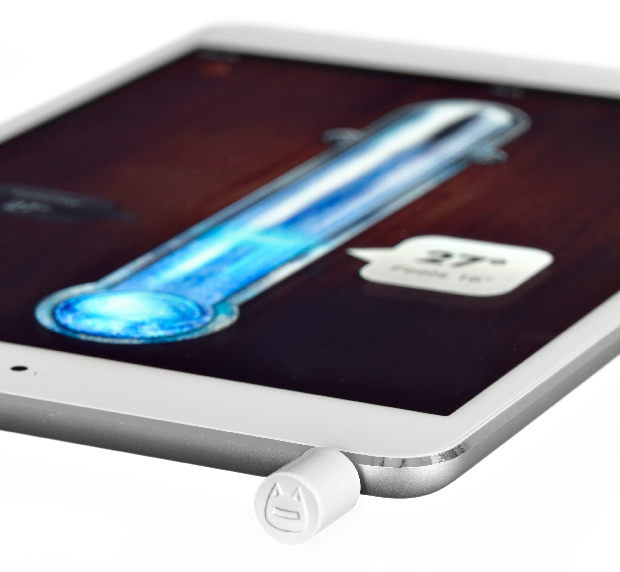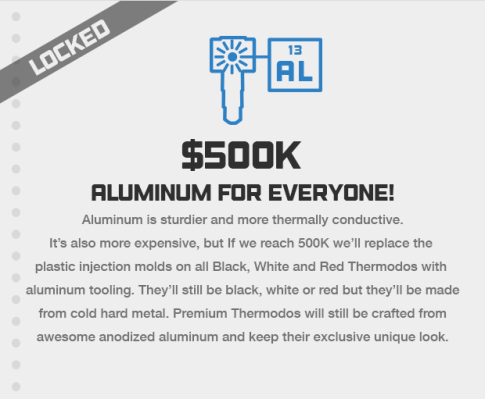For a company making a difficult switch from creating software to building hardware, Robocat is making very good early progress. The Danish startup’s Thermodo smartphone thermometer accessory hit its original Kickstarter goal of $35,000 in just seven hours yesterday, and is now at over twice that amount, with pledges still flowing in. Robocat accordingly announced some stretch goals this AM, in a manner that makes me think this is one of the best-engineered Kickstarter projects ever.
The stretch goals for the Thermodo include a $125,000 level, where Robocat will turn their affection more squarely to Android. The thermometer was always going to be compatible with Android devices through third-party developers, but the team will make the official Thermodo companion app Android-compatible if funding hits that level, and will ensure that Thermo, the startup’s existing app, will also work with Thermodo on Android.
At $250,000, a new colorway comes into the mix, with a red option available for all backers who pledged $25 or above. And finally, should the project exceed $500,000 in funding, everyone will get an aluminum Thermodo. Robocat is currently offering an anodized aluminum level, but that will remain special as the other levels will have only black, white and red as color options.
 The stretch goals look artfully planned to have been ready to go based on Thermodo’s early success, and that’s why I applaud the project’s design. Robocat went into it knowing exactly how much they needed to get the production line rolling, and asked for only that, but then were ready with upgrades designed to capitalize on the fact that it might be a hit with backers. Individual pledge levels are low, and the overall target looks very achievable, so backers are naturally less skittish about putting down their money since there appears to be little risk.
The stretch goals look artfully planned to have been ready to go based on Thermodo’s early success, and that’s why I applaud the project’s design. Robocat went into it knowing exactly how much they needed to get the production line rolling, and asked for only that, but then were ready with upgrades designed to capitalize on the fact that it might be a hit with backers. Individual pledge levels are low, and the overall target looks very achievable, so backers are naturally less skittish about putting down their money since there appears to be little risk.
Expect Thermodo to reach most, if not all of those tiers in its stretch goals. Which will add up to a huge amount of actual devices to ship when it comes time to deliver. That may be the most interesting part of the whole project: watching how a software company handles mass production of a hardware accessory.
